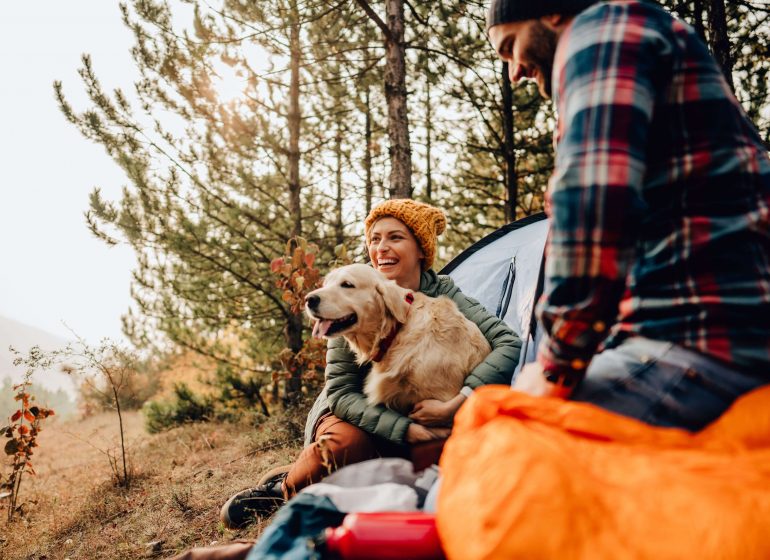
CHOOSE A TENT A SIZE BIGGER THAN ADVERTISED From camping at a festival in a squashed four man tent with three friends, I can assure you that you’ll want to size up. While it may be tempting (and is often cheaper) to find a tent for the exact number of people staying in it, I’d advise going for one size up to have a little more legroom and storage space for everyone’s backpacks. If you’re spending more than a night or two away, make sure that you’ve got an awning attached with a floor mat to keep you dry, so you can duck underneath when the rain hits while still getting a breath of fresh air.
WATCH OUT FOR THE WATER COLUMN OF YOUR TENT Tent material is made with a waterproof membrane or coating with stops water droplets from soaking through the fabric, and it’s important to check exactly how good your potential tent is at keeping moisture out before you buy it. According to Mountain Warehouse, “The minimum rating for a tent to be waterproof is 1,000mm. The higher the rating, the more waterproof the tent is.” Basically, if you can afford to get a tent with a groundsheet with a high water column, do so, and know that the flysheet of a tent can have a different waterproof rating than the groundsheet.

BRING A COMFORTABLE MAT AND PILLOW Many novice-campers make the mistake of camping sans mat, but sleeping directly on the floor of your shiny new tent won’t make for a pleasant experience. Even in a tent with the highest possible waterproof rating, pressure on the surface encourages water to seep through. As well as that, sleeping on cold, uneven ground isn’t going to set you up for a dreamy night’s sleep, so invest in a foam mat and comfortable pillow to lay underneath you and your sleeping bag.
SETTING UP YOUR TENT Before you leave for your adventure, have a go setting up your tent in a garden or green space using the instructions to save time and ensure you know how to do it when you’re out in the wild. When it comes to picking a good campsite, newbies will want to pick a spot with good facilities like toilets and showers, and ideally with a town nearby for picking up supplies. Once you’re there, always ensure you choose a place on level ground to pitch up, clear of debris like sticks and rocks that may damage your tent. Ensure you put the back of your tent in the direction of the wind and your pegs in the ground at a 45 degree angle so that it stays put. There’s nothing worse than a tent collapsing when you just want to get some sleep!
PLAN YOUR MEALS BEFORE YOU GO Plan what food you’re going to make when you’re camping before you go to save yourself a lot of time and hassle. Do some research into the campsite or area you’re staying in to see if you’re allowed to make campfires, and if you’re not, pre-plan some cold snacks like sandwiches, picnic food or food that can be microwaved in the kitchen facilities nearby. It’s always worth checking TripAdvisor to note down any local pubs or restaurants close by in case your culinary plans go wrong.
We hope these handy tips come in useful should you decide to take to the woods or pastures green this year. Have fun camping!


